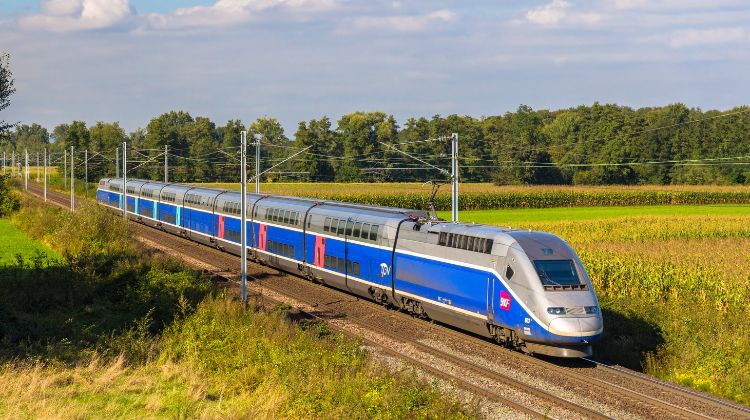
All Aboard the TGV: France’s High-Speed Train Revolution
Welcome to the world of TGV, France’s iconic high-speed train system that has revolutionized the way people travel within the country. In this blog post, we’ll delve into the history, ownership, network size, and capabilities of TGV trains, as well as explore the most popular routes, ticket purchasing options, costs, and some fascinating facts about this impressive train system.
A Brief History of TGV Trains

The TGV (Train à Grande Vitesse) was first introduced in 1981, marking a new era in rail travel. Owned and operated by the French national railway company, SNCF, the TGV was designed to provide fast, efficient, and comfortable transportation between major cities in France. With its sleek design and cutting-edge technology, the TGV quickly became a symbol of French innovation and engineering prowess.
TGV Network Size and Capabilities
The TGV network spans over 2,600 kilometers (1,616 miles) of high-speed rail lines, connecting more than 230 cities and towns throughout France and extending into neighboring countries such as Belgium, Germany, Italy, Spain, and Switzerland. TGV trains are capable of reaching speeds of up to 320 km/h (199 mph), making them one of the fastest train systems in the world. This incredible speed allows passengers to travel between Paris and Marseille, a distance of over 750 kilometers (466 miles), in just over 3 hours!
Popular TGV Routes and Ticket Information
Some of the most popular TGV routes include Paris to Lyon, Paris to Marseille, and Paris to Bordeaux. International routes, such as Paris to Brussels, Paris to Frankfurt, and Paris to Milan, are also in high demand. To purchase tickets, travelers can use the SNCF website or other online booking platforms such as Omio. Ticket prices vary depending on the route, travel class, and how far in advance the ticket is purchased. To secure the best deals, it’s recommended to book tickets as early as possible, with prices often starting from as low as €25 for one-way trips in second class.
Interesting Facts about the TGV System
- The TGV holds the world record for the fastest steel-wheeled train, reaching a speed of 574.8 km/h (357.2 mph) during a test run in 2007.
- TGV trains have an impressive punctuality record, with over 90% of trains arriving within 5 minutes of their scheduled time.
- TGVs are eco-friendly, producing up to 90% less CO2 emissions than cars and planes for the same journey.
- The TGV network carries over 100 million passengers annually, making it one of the busiest high-speed rail systems in the world.
In conclusion, France’s TGV network has transformed the way people travel within the country and beyond, offering a fast, comfortable, and environmentally friendly alternative to cars and planes. With an ever-expanding network and a commitment to innovation, the TGV is set to remain a symbol of French excellence for years to come.
Book TGV trains on France SNCF Connect or Omio.

